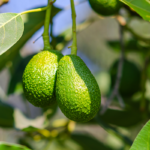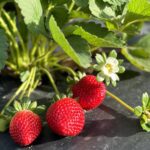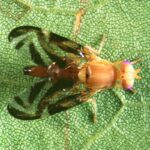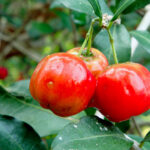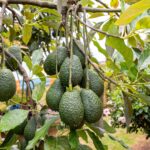Climate vs. Technology in Mexico and its impact on agriculture

The content of this article 'Climate vs. Technology in Mexico and its impact on agriculture' was prepared by www.hortalizas.com and has been revised and republished by FreshFruitPortal.com.
Climate vs Technology: Using technology is learning to take advantage of it and enhance it. Dr. Jorge Flores Velázquez, Agronomist in Protected Agriculture, assigned to the Sub-coordination of Irrigation Engineering at the Mexican Institute of Water Technology (IMTA), with a postgraduate degree in Water Sciences and Technology IMTA-UNAM, shared valuable knowledge at the Industry Summit in 2019 about the current and future work of technology in the agricultural industry.

The presentation covered five main points: what is an agricultural production system? What is the importance of the climate and the environment? What are some of the weather conditions in Mexico? What makes a productive region? And how to take advantage of these climatic conditions with technology?
The agricultural production system
Dr. Flores began by specifying that "all systems must be in balance". Historically, crop production is one of the oldest physical-chemical-biological relationship between four aspects: plant-soil-atmosphere-water; both in a linear and multilinear way.
This interrelation currently exists, but the interactions of using different disruptive technologies must be redefined, or different production systems developed (compared to traditional methods), resulting in increased yield and efficient resource use.
Today, regardless of whether the production systems are in cities or rural areas, "the application of any control strategy, whether in controlled conditions or open field, must be applied towards the optimization and management of the system through technology, normally based on mathematical models, to make efficient use of resource," he said.
The climate and the environment
To cover the second point, Dr. Flores opened with a question as basic as it is complex: What does the climate do? The climate is the sum of two aspects: the weather and the climate. Of these there are elements and factors.
All this creates a climatic region where, a climatically suitable region results when technology is added to the equation.
Breaking them down, he explained and defined each one:
- The weather and climate: it is what is happening at this moment. It's the weather. When we refer to the climate we speak of the overall average over time.
- Factors (physical elements): latitude and altitude are those that define whether the region is climatically suitable in its regional aspect, that is, it defines the climatic characteristics of the region.
- Elements (climatic): direct and derived, are those that define for what type of crop or production system can be developed.

All in all, the combination of these factors defines if the agroclimatic characteristics of a region is suitable. If yes, for which crops?
For this reason, we must know the climatic requirements of our crops and based on that then characterize them: "What must be maintained as a balance between resources and yields."
Secondary climatic factors:
- Heat flow.
- Pressure deficit.
- Atmospheric pressure, which represents air density and ventilation rate power.
- Carbon dioxide (CO2), this being the "gasoline" used by the plant to carry out its photosynthesis, a basic factor for production.
- Evapotranspiration, which is the amount of water that the plant needs. It is an important topic today when regarding the international water crisis, which fuels the search for new technological alternatives.
Dr. Flores emphasizes that it is important to know all these factors when creating a productive region. Though it all depends on the crop, and therefore, we must know the crop.
“Knowing the crop is the first point and then comes planning and scheduling. The complex dynamic climatic system forces us to introduce technology for monitoring, management (real or average time), control and efficient action."
Climatic conditions in Mexico
Paradoxically, one of the main problems and opportunities in Mexico is the complex climate classification that exists, which makes it difficult to decide on a general classification of the climate.
One more problem is the erratic rainfall. The issue of water is a starting point and precipitation as well as its storage must be learned about.
What makes a productive region?
A productive region is the sum of climate and technology, concepts already mentioned.
Regarding climate: “With average data, from thirty years ago, I can define if my region is suitable; and with daily data I can manage my crop,” said Dr. Flores.
The technology, with respect to precipitation and radiation, is based on management questions about the factors that are currently present and its management capabilities.
In general, what makes a suitable region? Climatically, in what is suitable, the bases are already in place, but we also talk about factors such as high radiation, warm winters, low relative humidity, communication routes, and finally the markets.
Regarding technology, the Regional Research and Development Units are important. Try, for example, the use of mesh, precision agriculture, remote sensing, sensor irrigation, etc.
Several factors are needed for high production including climate, work, water, soil. This allows us to zone the productive potential by region. But, in general, regarding the regions and their potential (high-medium-low), Mexico has a high capacity to produce.
However, "anomalies can occur and the region may be suitable, but we must consider it suitable for what or for whom", before the data collected by the agencies that concentrate and study them become significant.
Overall, Dr. Flores said "it is the benefit-cost ratio that defines whether it is a climatically suitable region."

Use of technologies
The opportunities and weaknesses of specific crops must be found and be protected or prevented.
For this, we have the use of technologies such as:
- Smart agriculture: analytical prediction of historical data.
- Artificial intelligence: automatic reaction machines.
- Biotechnologies: genetic modification, adaptation.
- The Internet of Things: chips, sensors, real-time activity.
- Urban agriculture: vertical, aquaculture, energy and nutrition.
Based on the above, four basic questions are raised:
- Climate prediction and simulation tools. This only has to do with the operation and precise knowledge of the specific crop about its physical, chemical and biological needs.
- Data acquisition system. The Internet of Things, “from my desk I am programming and I am receiving the data”.
- Precision agriculture monitoring. Mobile map sensors, use of satellite images, monitoring with nano-satellites. “Daily satellite image, which breaks temporality and spatiality and increases precision (of even one centimeter) towards, for example, seeing diseases."
- Controlled and semi-controlled systems. Derived from climate models, which are historical data acquisition systems in real time with the implementation of production systems so that the plant develops its potential.
In summary, Dr. Flores says that the plant has three forms of nutrition: mineral, vegetable (carbonic) and water; They are what defines its potential.
What happens if one of the parts of nutrition can be replaced? The technology then contributes the yield on some of the parts of the plant to provide it, this based on the meteorological stations and the calculation: the management of radiation, amount of water, transpiration, etc.
To end Dr. Flores said: “The region will be climatically suitable as long as a balance is achieved between these conditions and what we are obtaining. For this reason, it is important to know the climatic-regional characteristics so as not to over-invest in these resources. Make the most of local resources, that's why you have to get to know them and then start the process of change."
Sources and notes: Flores Velázquez, Jorge Dr., “Climate vs Technology” Conference. Team Deputy Director at the Mexican Institute of Water Technology (IMTA). Industry Summit Mexico 2019. León, Guanajuato. June 2019.
















